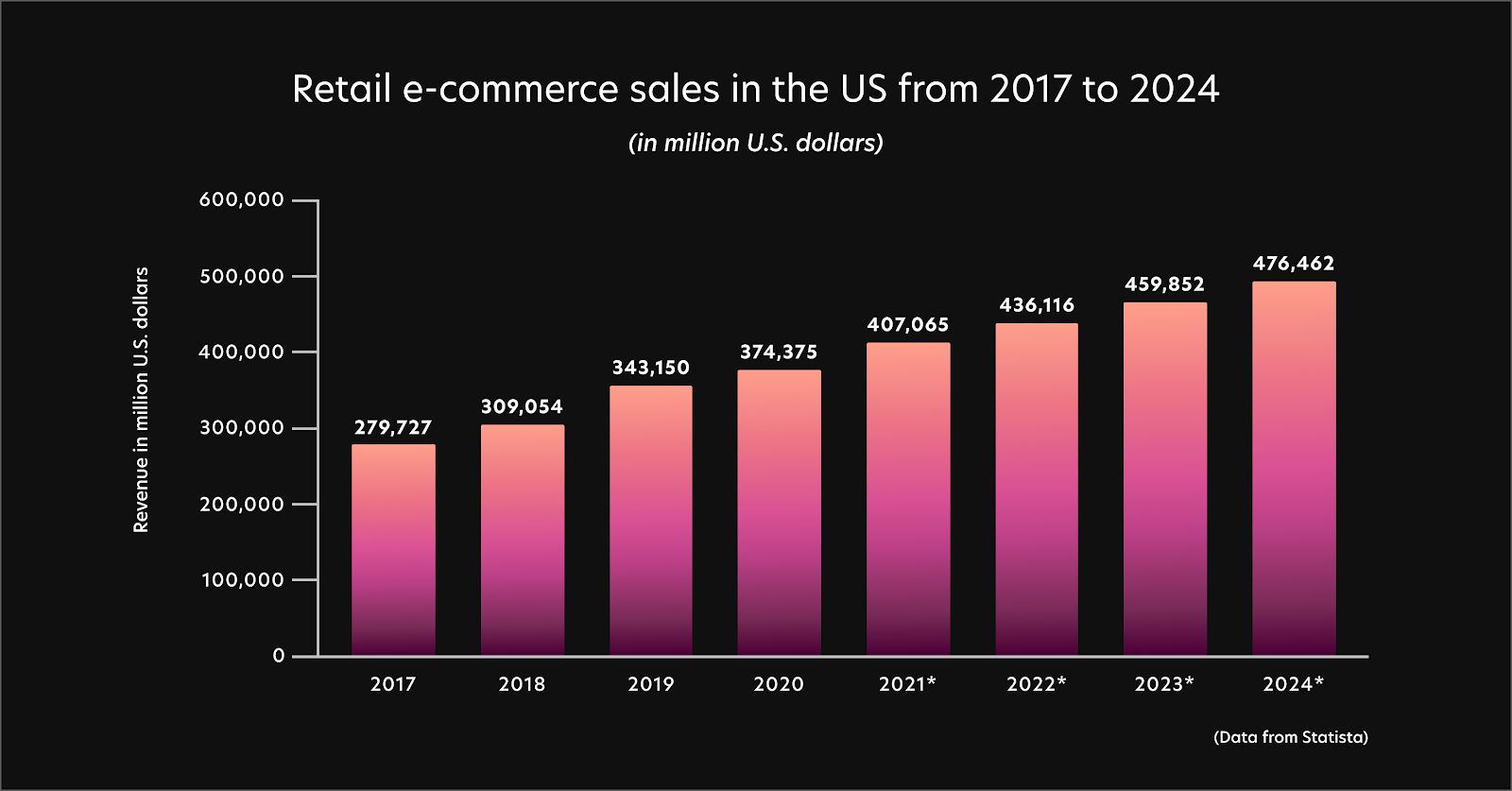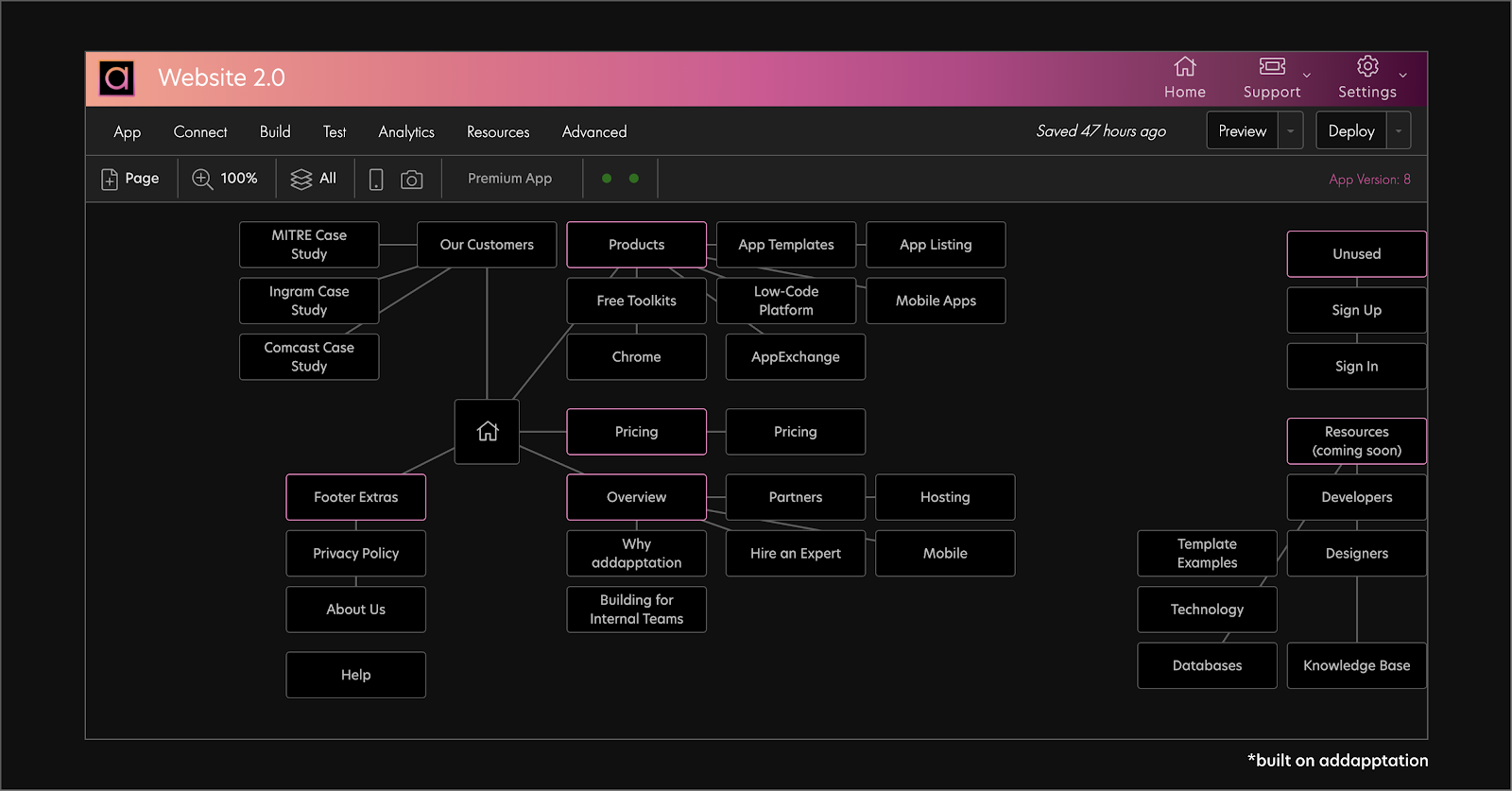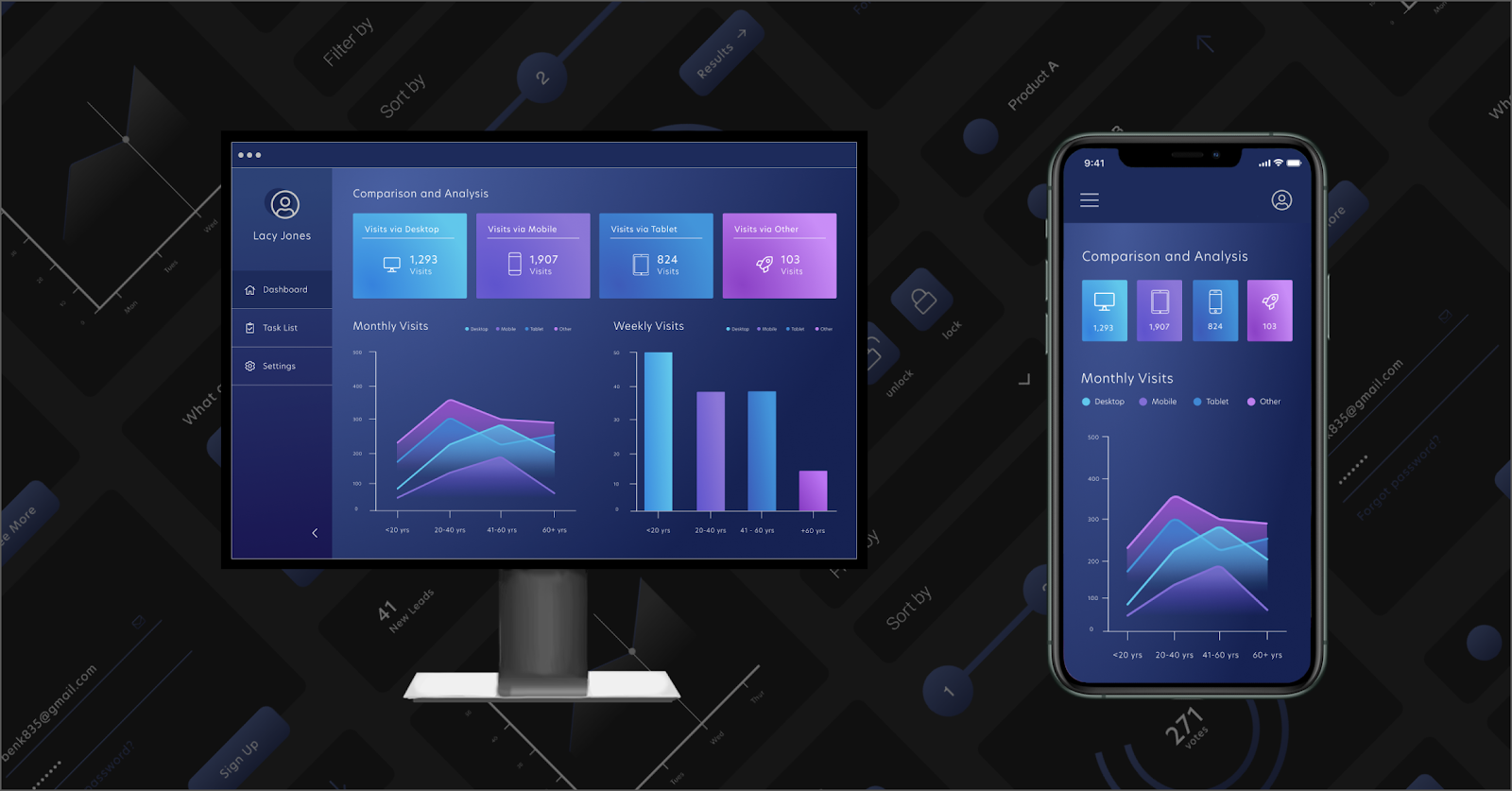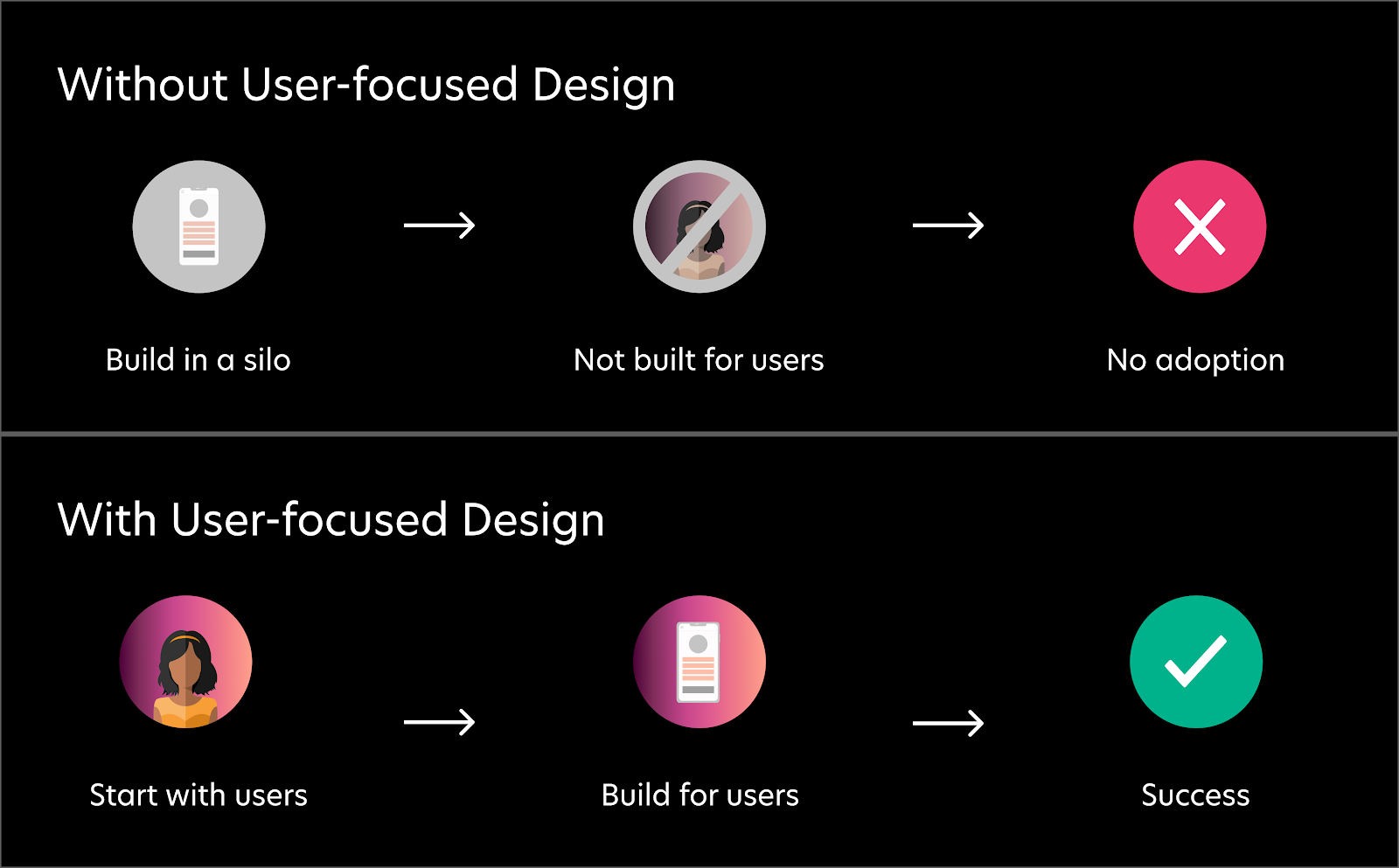UX (user experience) design is a popular search term – but what does it really mean? And if you’re building tools with a user interface, how can you create a design with users’ in mind that will bring business benefits?
In this article, we’ll clarify what UX design is, what happens when there is poor UX design, and how you can apply our 5 principles of UX design to achieve valuable, cohesive solutions that promote user adoption of your CRM.
The Problem
The user experience of apps, websites, and software in the consumer space continues to improve. Giants like Amazon, Walmart, and Target have made it easier than ever for customers to navigate their online offerings and make purchases, and it shows. E-commerce sales have increased year-on-year since 2017 and are projected to continue increasing over the next 3 years (Statista).
Enterprise software however, has not kept pace with the consumer market. Many enterprise solutions are difficult to navigate for all but the most technical users, often resulting in low user-adoption and failed projects. According to the Boston Consulting Group, “70% of digital transformations fall short of their objectives, often with profound consequences.” (BCG). So why did enterprise software fall so far behind our consumer expectations, especially with systems that are used regularly by businesses that rely on user adoption for data quality – like CRM?
“The primary reason they miss the mark in helping companies increase revenue is that CRM systems are too often used for inspection — to report on progress, improve accuracy of forecasts, provide visibility, predict project delivery dates, and provide a range of other business intelligence — rather than creating improvement in the sales process. Front-line sales professionals and managers rarely find the majority of these capabilities useful in winning more business for the company” (HBR)
In a nutshell, CRMs were not built with the end-users in mind, so end-users don’t find them easy to use without a substantial investment in training. This is why, when you look to build your CRM or other business solutions, it is critical to focus on your end user’s experience from the beginning.
User Experience
There are many different opinions about how UX is defined, but according to the Nielsen Norman Group, “user experience” encompasses all aspects of the end-user’s interaction with the company, its services, and its products” (NN/g). Though UX design is a large umbrella under which many related disciplines fall (such as usability and visual design), a solution with a good user experience generally meets customer needs, and is easy to use.
For admins and others responsible for building CRM solutions, it can be hard to know how to improve the users’ experience. Based on our collective years of experience with CRM architecture and intuitive design, we have identified 5 key principles to help guide you as you adopt a UX mindset.
Principle 1: Identify the job-to-be-done
A job-to-be-done can be defined as an outcome that a user is trying to achieve. If someone is requesting a new product, feature, or solution, they are doing so because they need to accomplish a particular task. They might already be using another solution that is not helping them accomplish the task that they need to. Identifying your user’s job-to-be-done helps you focus on the main problem that your user is facing and build a solution that directly addresses them. (NN/g)
There are several ways to pin-down your user’s job to be done. A great place to begin is to view yourself as a user and reflect on your own needs, experiences and behaviors (if applicable). You can then gather insights from other users through observation and by conducting interviews (HBS).
Part of identifying the job-to-be-done is mapping out your user’s workflow. The addapptation platform includes a workflow builder that helps you plot out your user journey from start to finish and create an app sitemap. Other tools, like Lucid Chart, offer workflow builders as well, and you can also find free templates like this one from Figma.
Principle 2: Collaborate with your users
Have you ever delivered an amazing new solution or feature that no one ever used? It can be very disheartening. That’s why it’s so important to collaborate with your users while building. It’s pretty difficult to build something that users don’t like if you build it with their help.
It’s one thing to understand the importance of collaboration, and it’s another to put it into practice. How can builders make sure to involve their users in the process?
At addapptation, we do this by scheduling co-creation sessions. These sessions last around 60 minutes, and we invite all key stakeholders (rather than just builders themselves). As we are building, users can provide real-time feedback that helps us design the app to their specific needs. Gathering multiple perspectives from our customers helps ensure that what we build works for the intended user.
Principle 3: Maintain database integrity
Oftentimes, CRM admin teams will add several different tools to their CRM in order to meet the needs of the organization. However, this can add complexity and risk to an already complicated database. Sometimes the addition of a new tool can have unexpected implications on a different part of the CRM.
That’s why it’s important to be very selective about the systems, apps and tools that you add or connect to your CRM. Adding complexity too early, like automation, governance rules, or overbuilding, can lead to confusion and will ultimately discourage users from adopting your tools. This leads to a vicious cycle: if users don’t enter their data into the system, the data will be unreliable, and if the data is unreliable, users won’t find value in the system.
For this reason, administrators must be extremely thoughtful about the tools they add to their systems in order to prevent users from having a bad experience. The good news is that, if you follow the two previous principles, you will already have good insight about which tools are truly crucial to your organization.
Principle 4: Be where your users are
On a very practical level, this principle requires that you consider the devices that your users are using most frequently. For example, your sales representatives might prefer working from their mobile devices because they travel frequently. Some users might engage with your solutions from different devices depending on the circumstance. Because many of the websites, apps and platforms that people interact with today offer a very similar experience on all devices, they expect their business solutions to offer similar flexibility. People don’t want to learn how to do their jobs twice, nor should they have to. If an experience isn’t the same in different settings, users will choose one place to do their work.
It’s also important to ask deeper questions about your users’ behavior. Are they struggling to manage multiple technologies at once? If so, it’s important to provide them with a consistent and simplified UX to avoid confusion. In order to ensure that all of your users are satisfied with their experience, try to view the solutions you’re building through the eyes of your least technical users.
Principle 5: Listen to your users
When you order a salad and someone hands you a plastic spork, do you wonder about the people that designed sporks in the first place? Did they consider the possibility that someone would try to use this spork to eat a cherry tomato, but the half spikes would cause that spork to bend and launch your food off the plate? Did they ever test to see if people could actually use it?
The technology we build is no different. Great ideas don’t inevitably lead to great results. Innovation and iteration is wonderful, but without feedback you can end up with a spork situation.
Technology must be tested. User feedback is incredibly valuable; it can prevent mistakes, offer new direction, and improve current processes. Any time you present a new solution to your organization, it is absolutely critical to get feedback and test use cases.
There are a couple of different ways that we recommend gathering feedback:
- Provide users with an easy way to offer feedback. This allows your users to identify bugs or workflow issues instantly when and where they find them.
- Demo your solution to key stakeholders so they can give you real time reactions. There is nothing better than witnessing first hand where your users may get lost, confused, or frustrated.
Gathering user feedback is crucial before, during and after implementation in order to ensure that users are satisfied with their experience and continue to use the solutions you build.
Summary
It is clear that we have work to do in enterprise software to catch up with the simplicity and ease of use of consumer software. Teams that prioritize UX can address problems before they arise. Applying these 5 principles can help to ensure that your users get value from the solutions that you build and ultimately unlock the full power of one of your most valuable assets, your data and CRM platform.



